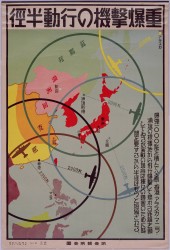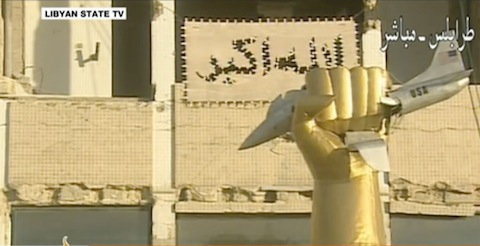At 10:45am on 25 April 2015, a RAAF Hornet (possibly a Super Hornet) flew 500 feet over my house. Ordinarily my response to something like this would be: COOL. But this day was a bit different, because it was, of course, Anzac Day; and not just any Anzac Day, but the long-anticipated centenary of the Australian and New Zealand invasion of Gallipoli on 25 April 1915. Anzac Day is now the most important day in the national calendar, eclipsing Australia Day, 26 January, the anniversary of white settlement and the official national day, as well as Remembrance Day, 11 November, the anniversary of the end of the Great War and the other major day in the Australian calendar which commemorates war. Why? The Australian War Memorial (AWM) puts it like this:
Anzac Day goes beyond the anniversary of the landing on Gallipoli in 1915. It is the day on which we remember Australians who served and died in all wars, conflicts, and peacekeeping operations. The spirit of Anzac, with its human qualities of courage, mateship, and sacrifice, continues to have meaning and relevance for our sense of national identity.
But the ANZAC Day Commemoration Committee of Queensland probably gets closer to its real significance for Australians:
one day in the year has involved the whole of Australia in solemn ceremonies of remembrance, gratitude and national pride for all our men and women who have fought and died in all wars. That day is ANZAC Day — 25 April.
Every nation must, sooner or later, come for the first time to a supreme test of quality; and the result of that test will hearten or dishearten those who come afterwards. For the fledgling nation of Australia that first supreme test was at Gallipoli.
This is what Anzac Day is really about: ‘The Gallipoli landing was in an important sense the birth of our nation. Certainly it was the coming of age’, as prime minister Tony Abbott said, not entirely consistently, a few weeks ago. A century ago, many would have shared his sentiments, too. But a generation later, the patriotism and militarism embodied in that viewpoint had begun to seem old-fashioned, even dangerous, after another world war and a new cold war; and after another generation, with the original Anzacs fading away, it seemed like Anzac Day would too. (I barely remember Anzac Day from when I was a kid, which seems bizarre to me now given its present prominence and my own war obsession.) That has changed utterly: an incredible 128,000 people turned up to the dawn service in Canberra, about a third of the population (though no doubt many were from out of town: the AWM is the central site for Australia’s memory of its wars).
My own attitude has changed, even over the lifetime of this blog. Early on, I mostly wrote about Anzac by way of my own family history: my great grand uncle’s death in the First World War, his service record, and his grave; and my great uncles’ service in both world wars. I also wrote about Australian war memorials. The tone of those posts was respectful, even reverent. Which is to say, my understanding was probably not too dissimilar from that of most Australians (and family history has had much to do with Anzac’s resurgence over the last couple of decades). Not that I would want to be any less respectful now, but I’ve definitely become less reverent, more critical of the Anzac myth and the memory of Australia’s wars — often in posts written on or around Anzac Day. So, in 2008 I noted, rather obliquely, that not only was Australia not the only country involved in the attack on Gallipoli, but it wasn’t even the one to take the most casualties. In 2009, I took issue with C. E. W. Bean’s portrayal of the British soldier as inferior to the Australian digger. In 2010, I criticised the failure to remember Australia’s role in the Dresden firestorm as well as the centrality of mateship to the Anzac legend. I seem to have been posted on these topics less in recent years, but in 2013 I summed up many of my problems with the public memory of Australia’s military history and worried that a new, conservative government, combined with the approach of the First World War centenary, was about to embark on a new history war.
That didn’t happen, at least not in the form I was expecting; but the centenary of the Gallipoli landings has become something of a battlefield itself, albeit not involving governments and militaries so much as the public and corporations. On the one hand, a series of at best poorly conceived, at worst shamelessly exploitative uses if Gallipoli or Anzac by commercial enterprises. Of course, these were and are framed as respectful tributes to our Anzac heroes (etc), but advertising campaigns like Woolworths’ ‘Fresh in our Memories’ ended up as a social media disaster, as it was mocked and criticised for crassly attempting to link its advertising slogan to the image of a young and handsome soldier. There was more, and worse. Some uses were shut down by the government (‘Anzac’ is a protected word and its use for commercial purposes requires approval from the Department of Veterans Affairs) while others went ahead. At least these controversies did provide a media platform for historians working in this area, such as Jo Hawkins and Carolyn Holbrook (who even scored an appearance on Q&A, a prominent ABC TV talk show). But as Jo said on Twitter, ‘#brandzacday backlash = fewer products that trivialise war. Good. Yet could also reinforce Anzac as untouchable ‘sacred cow’. Not so good.’
Only a week later, Jo’s prediction seemed to come true. Scott McIntyre, sports reporter for SBS, a government-owned but semi-commercial broadcaster, dared to criticise the Anzac myth on Twitter and was quickly pilloried and then sacked for breach of contract. What he said undoubtedly highly provocative and poorly expressed, but it wasn’t all wrong — Australians have done things in war that we should not be proud of, for example, which is completely ignored when we ritualistically and unthinkingly honour the memory of ‘our boys’ (etc). Few people (with Philip Dwyer and Geoff Lemon being honourable exceptions) were interested in discussing that, however, and the outrage was directed at the fact and the timing of McIntyre’s criticism rather than the substance.
So Anzac does indeed seem to be a sacred cow. It cannot be questioned or undermined. It can only be embraced and extended. Even in the week since the centenary of Gallipoli, the government has unveiled plans for a $100 million ‘educational centre’ at Villers-Bretonneux to commemorate the AIF’s role in France and Belgium, as well as $35 million (possibly with some overlap) for events marking the centenary of the fighting in 1918 in particular, in which Australians played a key, and admittedly neglected, role. That puts the Australian government’s total expenditure on the First World War centenary at around $300 million; when state and corporate expenditure is included that figure rises to well over $500 million. As far as anyone can tell, this is not only more than any other country is spending on the centenary, it’s [added: approaching] three times more than all other countries combined. There is no doubt that, as Ben Wilkie points out, Australians feel very strongly connected to Anzac; but this amount of money is absurdly disproportionate, especially in an era of supposed budget emergencies. Perhaps we should start calling it the Great Australian War instead.
So why do I have a problem with that Hornet flypast? After all, it is a very nice example of aerial theatre, so it should be grist to my mill. And so it is, which is why it troubles me. Firstly, the deafening roar which could be heard all over town meant that, in effect, you were forced to participate in the Anzac Day commemoration whether you wanted to or not. Secondly, a fast and loud pass by a modern jet fighter seems less like respectful commemoration and more like outright militarism. And thirdly, Armidale has a small refugee population drawn largely from South Sudan, as well as migrants and students from all over the world. It’s likely that there are people living here for whom a military jet flying fast and low overhead evokes neither contemplation nor excitement, but sheer terror. Australia, and its place in the world, has changed greatly since 1915. If we must continue to define our national identity by war, perhaps we could at least try to look beyond the shores of Gallipoli and try for a broader understanding of what war was, is and might be.
![]() This work is licensed under a Creative Commons Attribution-NonCommercial-NoDerivatives 4.0 International License.
Permissions beyond the scope of this license may be available at http://airminded.org/copyright/.
This work is licensed under a Creative Commons Attribution-NonCommercial-NoDerivatives 4.0 International License.
Permissions beyond the scope of this license may be available at http://airminded.org/copyright/.





Well put. Needless to say, I share your concerns that your is becoming a national militaristic display that is completely untouchable.
Five hundred million for a centennial celebration seems perfectly reasonable to me. That’s less than sixty dollars per Australian! I think the real concern here is the way that the rest of the world is letting a “centennial gap” open up.
If, however, Australians are concerned that they’re spending too much money on a replacement history for the unfortunate and boring one they actually experienced, I would suggest old pulp magazines. An Australian past involving lost continents, Lemurians, sword & sorcery, dinosaur-men and what not would be infinitely cooler than a bunch of boys getting shot in Turkey, and I’m pretty sure the copyright has expired.
Hi Brett; 3 times all the others might be pushing it a bit now but, hey, the year’s still young.
Heath:
Thanks — untouchable is the word. Reactions to criticism won’t always be as savage as in the case of McIntyre, but neither will anyone pay any attention to them!
Erik:
Been there, still doing that.
David:
Thanks — correction noted.
Did you see this was linked to from Honest History?
Indeed! (David who commented above is the powerhouse behind Honest History.)
Pingback: A day to remember – Airminded
Pingback: That’s war! – Airminded